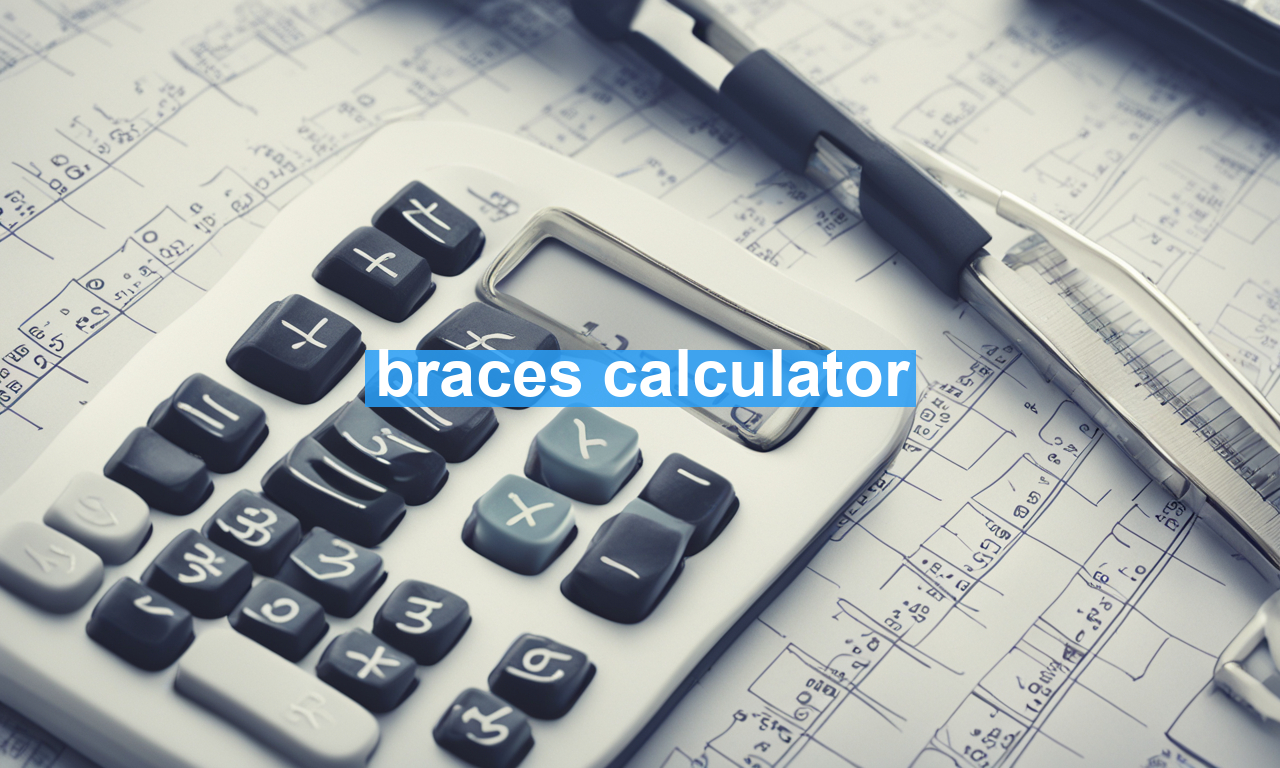Are you or someone you know considering braces? If so, you’re likely curious about the financial aspect of orthodontic treatment. Fortunately, a braces calculator can provide a handy estimate, giving you peace of mind as you budget for that dazzling new smile. Using a braces calculator isn’t just about crunching numbers; it’s a gateway to more informed decision-making about your orthodontic journey. This blog post will delve into the significance of using a braces calculator and answer some common questions to make this digital tool more approachable.
Why Use a Braces Calculator?
Navigating the world of orthodontics can be overwhelming. Braces calculators take some of the guesswork out of the equation by offering a rough estimate of costs based on a few variables. Here’s why you should consider using one:
- Cost Transparency: Understanding the financial commitment helps you plan better. A braces calculator provides a ballpark figure based on different types of braces, so you’re not blindsided by unexpected expenses.
- Time-Saving: Instead of calling multiple orthodontic offices for quotes, you can get an estimate quickly and conveniently.
- Accessibility: Many calculators are user-friendly and freely available online, making them accessible to anyone.
How Accurate Are Braces Calculators?
While braces calculators offer a good starting point, it’s essential to remember that they provide estimates and not guaranteed prices. Factors such as the complexity of your dental condition, geographical location, and specific orthodontist fees can all influence the final cost. For a more precise estimate, you’ll need a consultation with an orthodontist.
Factors Affecting the Cost of Braces
Several elements can influence how much you’ll ultimately pay for braces:
- Type of Braces: Traditional metal braces, ceramic braces, lingual braces, and clear aligners like Invisalign all come with different price tags.
- Duration of Treatment: Longer treatment times typically mean higher costs due to more frequent visits and adjustments.
- Additional Procedures: Some patients may require additional procedures such as extractions or jaw surgery, adding to the overall cost.
- Insurance Coverage: Some dental insurance plans cover part of the orthodontic treatment, which can significantly offset costs.
Step-by-Step Guide to Using a Braces Calculator
Step 1: Find a Reliable Calculator
Start by finding a reputable braces calculator, like the one offered by [Fair Health Consumer](https://www.fairhealthconsumer.org/dentalcostlookup). Reliable sources ensure more accurate estimates, aligning with common standards in dental care pricing.
Step 2: Input Relevant Information
You’ll generally need to enter information such as:
- Age of the patient
- Type of braces preferred
- Geographical location
Step 3: Review Your Estimate
Once you’ve input the necessary details, the calculator will provide an estimated cost range. This will give you a better idea of what to expect financially.
Common Myths About the Cost of Braces
Myth 1: Braces Are Only for Kids
Many people believe orthodontic treatment is only for children and teenagers. However, adults are increasingly opting for braces. In fact, one in five orthodontic patients is an adult. Many adult-specific options can be discreet, like clear aligners.
Myth 2: All Braces Cost the Same
Not all braces are created equal. The type of braces, the complexity of the dental issue, and the duration of treatment can all drastically affect the overall cost. Make sure to explore your options to find the best fit for your budget and needs.
How to Budget for Braces
Once you have a cost estimate, it’s time to budget for your treatment:
- Review Your Insurance Plan: Look into whether your dental insurance plan covers orthodontic treatment. This can significantly reduce your out-of-pocket expenses.
- Flexible Spending Accounts (FSA): If your employer offers an FSA, consider using it to pay for your braces, as these funds are pre-tax.
- Payment Plans: Many orthodontists offer payment plans, allowing you to spread the cost over time. This can make the financial burden more manageable.
In Conclusion
Using a braces calculator can provide a helpful estimate, offering a clearer financial picture as you embark on your orthodontic journey. While these calculators offer a good starting point, remember that consultations with an orthodontist will give you the most accurate information. Finally, don’t forget to consider the various factors affecting the cost and explore payment options and insurance plans to make orthodontic treatment more affordable.
If you’re curious and want to dive deeper into what orthodontic treatment entails, consider reading detailed guides on resources like the American Association of Orthodontists.
Ready to take the next step towards that beautiful smile? A braces calculator is just the beginning, but it’s a fantastic tool for planning and peace of mind. Here’s to your journey towards a confident, radiant smile!

